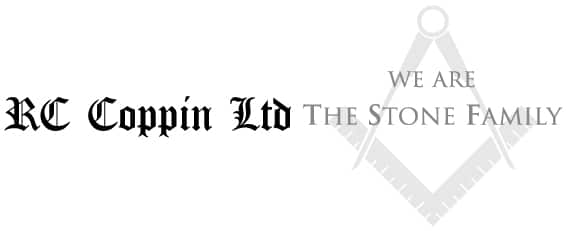The History Of Stonemasonry
RC Coppin belong to a coveted club: a cluster of stonemason companies that have been trading for more than a century. But despite our longstanding and established status in the industry, stonemasonry itself precedes us by thousands of years – dating back to the dawn of civilisation.
Here, we’re taking the opportunity to peel back the pages of the stonemason history book, chronicling the most momentous chapters in this prestigious craft and highlighting RC Coppin’s place in the timeline.
Early history
Stonemasonry is regarded as one of the world’s earliest vocations. Thought to be more than 12,000 years old, evidence can be traced back to the Neolithic Revolution, where humans first began to domesticate animals and build communities. Fire was summoned to create quicklime, plaster and mortar – and these materials were subsequently used to construct stone homes.
Stonemasonry soon began to shape living standards all over the world, eventually blossoming into a trade that built the greatest architectural achievements in human history. Pertinent examples include the pyramids of Egypt, Grecian temples, and the vast coliseums and bath houses of Ancient Rome.
The evolution of stonemasonry
For centuries, the techniques, tools and attitudes in stonemasonry remained largely unchanged. It was not until Medieval times that a new breed of stonemason emerged – those who constructed the fine 9th/10th/11th-century cathedrals of Europe. This age was transformative for the craft, as highly skilled stonemasons began to differentiate themselves from ordinary workers and take pride in their unique designs.
As the Medieval period merged into the Renaissance, the demand for wonderful works of art – the types of structures that could only be created by truly talented stonemasons – increased dramatically. It was during this time that stonemasonry developed from a standard construction procedure into a craft with recognisable artistic merit.
The 20th century: RC Coppin is born
The late 19th century spawned the invention of machinery that eased pressures on stonemasons, resulting in a reduced use of animals or hired labour.
As the years ticked over into 1900s, the roots of RC Coppin began to take a hold. A young, ambitious stonemason by the name of Ronald Douglas Coppin launched the company in the district of Bow in London’s East End, quickly gaining a reputation in the community for quality projects of all shapes and sizes.
Word of Ronald Douglas’ talent spread across the Atlantic Ocean, with the White House requesting a fireplace carved by his hand. Although the structure was sadly lost at sea, the RC Coppin named lived on.
Ronald Terence inherited the business from his father, maintaining high standards as he moved the factory to larger premises in Stratford. Brothers Ronald Charles and Terence Ronald took the reins in the 1980s, keeping the family tradition alive after relocating to Essex – where RC Coppin HQ currently resides.
Stonemasonry boasts a long, illustrious history, and we’re honoured to be part of it – paying testament to its magnificent traditions by continuing to push ourselves on every concept. Despite the hundred years behind us already, we’re adding our own chapter to the narrative, and hope that the next century is just as inspired as the first. Whatever happens, we’ll always be motivated by family ties, along with a profound understanding and respect for our craft.
You can speak to our knowledgeable team of stonemasons at any time to learn all about the masterpieces we’ll build for you. Simply call 01376 550 009 or leave a message.





